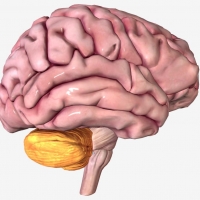What is the cerebellum?
The portion of the brain in the back of the head between the cerebrum and the brain stem. The cerebellum controls balance for walking and standing, and other complex motor functions.
The cerebellum (“little brain”) is a structure that is located at the back of the brain, underlying the occipital and temporal lobes of the cerebral cortex …
The cerebellum controls voluntary movements such as:
The major functions of the cerebellum are its involvement in balance (controlled via its connection to the inner ear), equilibrium, muscle tone, coordination, and motor learning: Control of balance and posture. The cerebellum is responsible for making adjustments to posture in order to maintain balance.Nov 26, 2019
How does cerebellum control movement?
Maintaining balance: The cerebellum has special sensors that detect shifts in balance and movement. It sends signals for the body to adjust and move. Coordinating movement: Most body movements require the coordination of multiple muscle groups.
Do you remember when you learned to ride a bike? The cerebellum is responsible for you learning to ride a bike. Without a cerebellum, it would be impossible to learn how to ride a bike, play the piano, or perform a gymnastics routine or play pickelball. It is involved in how the brain learns muscle movement and how it hones those movements for improvement. As a ballet student develops into a ballerina or a piano novice grows into a professional pianist, they have their cerebellum to thank for its ability to fine-tune action and controlled movement.
Maintenance of balance and posture. The cerebellum is important for making postural adjustments in order to maintain balance. Through its input from vestibular receptors and proprioceptors, it modulates commands to motor neurons to compensate for shifts in body position or changes in load upon muscles. Patients with cerebellar damage suffer from balance disorders, and they often develop stereotyped postural strategies to compensate for this problem (e.g., a wide-based stance).
info on Cerebellum taken from Google & Patricia Facty staff “Facty Health”
